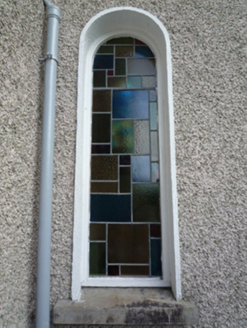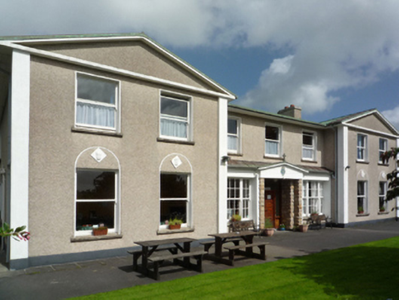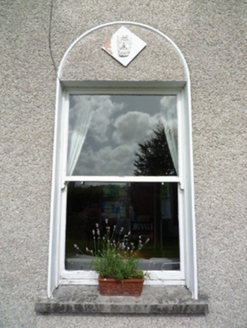Survey Data
Reg No
31212016
Rating
Regional
Categories of Special Interest
Architectural, Artistic, Historical, Social
Previous Name
Westport Christian Brothers Monastery
Original Use
Monastery
In Use As
Hostel
Date
1960 - 1965
Coordinates
99777, 284797
Date Recorded
26/08/2008
Date Updated
--/--/--
Description
Detached seven-bay two-storey monastery, built 1962, on a U-shaped plan with two-bay (two-bay deep) full-height pedimented projecting end bays. Closed, 2002. Now in alternative use. Pitched copper-covered roof on a U-shaped plan with pressed or rolled ridge, roughcast chimney stacks having cut-limestone stepped capping supporting terracotta pots, and extruded copper rainwater goods on slightly overhanging eaves retaining cast-iron downpipes. Roughcast walls on rendered plinth with rendered piers to corners supporting monolithic pediments. Square-headed central door opening with timber panelled door having sidelights on panelled risers below overlight. Square-headed window openings with concrete sills, and concealed dressings framing one-over-one timber sash windows. Set in landscaped grounds.
Appraisal
A monastery erected on a site obtained (1958) from Denis Edward Browne (1908-91), tenth Marquess of Sligo (Ó Flanagáin in Maguire 1987, 7), representing an important component of the mid twentieth-century built heritage of Westport with the architectural value of the composition, one recalling the earlier Mount La Salle Monastery (1950) in Ballyfermot, County Dublin, and thereby attributable to Simon Aloysius Leonard (1903-76) of William Henry Byrne and Son (formed 1902) of Dublin, confirmed by such attributes as the symmetrical footprint centred on a somewhat featureless doorcase; the diminishing in scale of the openings on each floor producing a graduated visual impression; and the pedimented roofline. Having been well maintained, the elementary form and massing survive intact together with substantial quantities of the original fabric, both to the exterior and to the restrained interior where basket weave parquetry; Mondrian-esque stained glass; and sleek cornicing, all highlight the modest artistic potential of a monastery making a pleasing, if largely inconspicuous visual statement in Newport Street.





